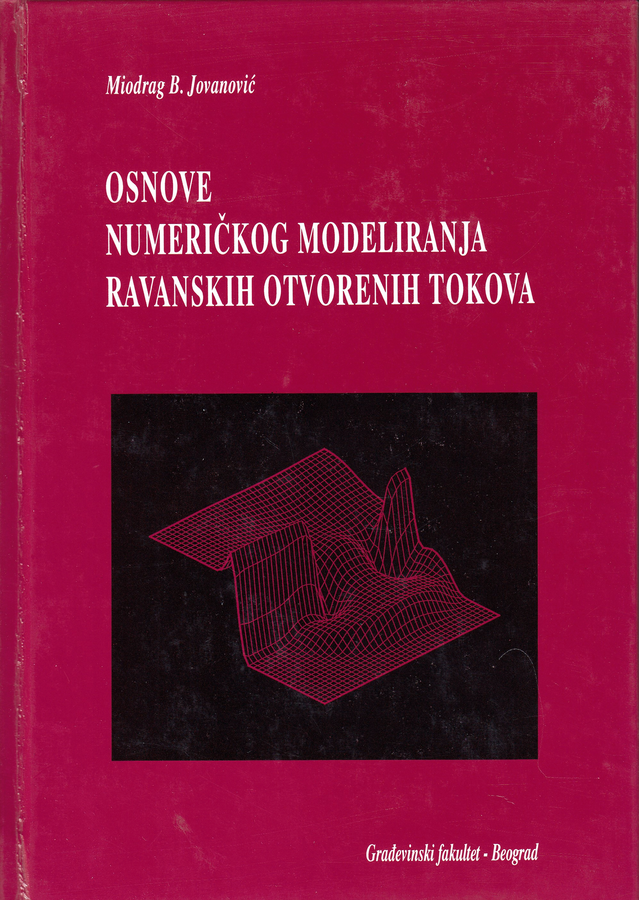Book
M. Jovanović

M. Jovanović
Introduction to Numerical Modelling of Two-Dimen-sional Free Surface
Flows
(in Serbian)
Faculty of Civil Engineering
Belgrade, 1998.
ISBN 86-80049-83-2
Pages: 395
About the book:
This book originated from the author's lectures on the subject of River hydra-ulics, on the post-graduate studies at the Faculty of Civil Engineering in Bel-grade. In the hope that the book will be also useful to practicing engineers, this book is based more on a sowewhat "engineering-intuitive" approach to ex-plaining numerical procedures, and less on strictly proving the existence of numerical solutions. "Classical" nume-rical methods of finite differences, as well as methods of finite and boundary elements are presented. Understan-ding them can help engineers to effectively use commercial software and to form a critical awareness of the capabilities and limitations of numeri-cal modeling of open channel flows.
Contents:
1. Equations of Two-Dimensional Free Surface Flows
2. Shear stress modelling
3. Turbulence modelling
4. Method of Characteristics
5. The Finite Difference Method
6. The Finite Element Method
7. The Boundary Element Method
Appendix A: Classification of partial differential equations
Appendix B: The Von Neumann stability analysis
Subject and author index